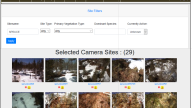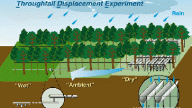Related Sites
Resources from other sites related to SPRUCE.
-
Peer Inside The SPRUCE Bog
Summary
SPRUCE (Spruce and Peatland Responses Under Changing Environments) is one of the world’s largest peatland warming experiments. It is located in a forested bog at the southern edge of the boreal range. Led by Paul Hanson at ORNL and supported by the Biological and Environmental Research program in the U.S. Department of Energy’s Office of Science, SPRUCE is the home of ten large open-top enclosures that are used to explore the effects of whole-ecosystem warming (above- and belowground) on peatland ecology and biogeochemistry. The enclosures span a range of warming from +0 to +9°C, and half are also exposed to elevated [CO2] (+500 ppm above ambient)
Relevance
No magic goggles or telescopes are required to see inside a peat bog! Instead, we use automated minirhizotrons. These are clear tubes where a digital microscope camera is inserted, and images are collected over time.
-
Link To PhenoCam Website For SPRUCE Cameras
Summary
Navigate directly to the Gallery of SPRUCE cameras at the PhenoCam Website.
Go directly to the Gallery of SPRUCE cameras with the following University of New Hampshire 'PhenoCam' link.
And, search for other sites that match your specific criteria: Site Name, Type, Primary Vegetation Type, Dominant Species, or Active status.
Relevance
Navigate directly to the Gallery of SPRUCE cameras at the PhenoCam Website.
-
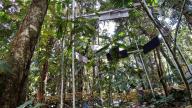
Tropical Responses To Altered Climate Experiment (TRACE)
Summary
Tropical forests take in and store more carbon dioxide than any other biome around the world, but climate change may pose a threat to this invaluable service. Scientists from various governmental agencies and universities are working together to measure the potential impacts of climate change- particularly temperature increase- on soil structure, carbon cycling, and plant physiology. The TRACE experiment consists of using infrared heat to warm the soil and plants of the understory, as well as individual leaves and branches in the forest canopy.
On this website, you can learn about our project and join us in our efforts to better understand how tropical rainforests will behave in a warmer future. This experiment will help improve conservation strategies for these irreplaceable ecosystems and all the biodiversity and natural resources they sustain.Relevance
TRACE is the first-ever warming experiment to be conducted in a tropical forest ecosystem. Photo is one of the warming plots in the Luquillo Experimental Forest, Puerto Rico.
-
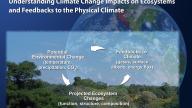
ESD Ecosystem Sciences Group
Summary
The Ecosystem Science Group conducts fundamental research to develop an understanding of mechanisms of terrestrial response to environmental change at multiple scales for the projection of the fate and function of terrestrial biomes in the future.
Relevance
The Ecosystem Science Group is the home of the SPRUCE research team.
-
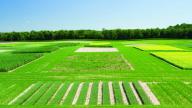
DOE, Office Of Science, BER Website
Summary
BER advances world-class biological and environmental research programs and scientific user facilities to support DOE’s energy, environment, and basic research missions. Mission priorities: * Develop biofuels as a major secure national energy resource * Understand relationships between climate change and Earth’s ecosystems, and assess options for carbon sequestration * Predict fate and transport of subsurface contaminants * Develop new tools to explore the interface of biological and physical sciences Organizational Structure * Biological Systems Science Division (BSSD) - supports fundamental research and technology development to achieve a predictive, systems-level understanding of complex biological systems to advance DOE missions in energy, climate, and environment. * Climate and Environmental Sciences Division (CESD) - supports fundamental research to achieve a predictive, systems-level understanding of climate change, as well as subsurface contaminant fate and transport, to advance DOE missions in energy, climate, and environment.
Relevance
Terrestrial Ecosystem Science program is the sponsor for SPRUCE.
-
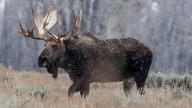
US Forest Service Northern Research Station
Summary
The Northern Research Station extends across 20 states, comprising both the most densely populated and most heavily forested portion of the US. We envision a region where trees and natural resources support a high quality of life; wildlife, fish, and plant communities thrive; clean water abounds; and people work together to sustain and restore the health of forests. To achieve this vision, the people and communities of the Northeast and Midwest need high quality scientific information. The Northern Research Station is dedicated, organized, and staffed to provide that scientific information in a form that people can use.
Relevance
The Marcell Experimental Forest is located within the Northern Research Station.
-
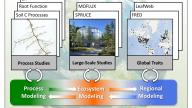
ORNL Terrestrial Ecosystem Science Scientific Focus Area
Summary
The TES SFA supports research to understand and predict the global terrestrial ecosystem forcing of the earth’s climate, and to assess vulnerability of terrestrial ecological systems to projected changes in climate and atmospheric composition. The research is focused on how terrestrial ecosystems affect atmospheric CO2 and other greenhouse gases and how the ecosystem processes responsible for these effects interact with climate and with anthropogenic forcing factors.
Relevance
SPRUCE is one component of the ORNL TES SFA.
-
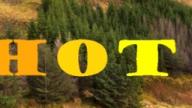
FORHOT (Natural Soil Warming in Natural Grasslands and a Sitka Spruce Forest in Iceland)
Summary
In the FORHOT research project we study how changes in soil temperature affect various ecosystem processes in both natural grasslands and a planted 45-year old Sitka spruce forest in S Iceland. Background: On May 29, 2008, there was an earthquake in S-Iceland that measured 6.3 on the Richter scale. One of its many implications was that geothermal systems close to its epicentre were disturbed. At Reykir, one of the campuses of the Agricultural University of Iceland, one such geothermal system moved from its previous location, to a new and previously “cold” area. The new belowground geothermal channels resulted in soil temperature to increase in the new area that is ca. 4 ha in size. The soil temperature increase varies with depth down to the geothermal channels, and ranges from +0 °C to +52 °C where the channels are closest to the surface. The heated area is covered by two ecosystem types: a) a planted 45 year old Sitka spruce (Picea sitchensis) forest and b) a natural treeless grassland dominated by Festuca sp., Agrostis sp. and moss. This created a natural soil warming experiment that now (2014) has lasted for six years. This natural experiment gives a unique opportunity for ecologists to study how various ecosystem processes are affected by temperature. The large range in temperature elevations at the ForHot site both offer conditions similar to the predicted climate change during the next century and more extreme temperatures that can give new insights into stress physiology.
Relevance
Natural warming experiment in Iceland.
-
Society Of Wetland Scientists (SWS)
Summary
Welcome to the web site of the Society of Wetland Scientists (SWS), an international organization of about 3,500 members dedicated to fostering sound wetland science, education, and management. SWS is the society for wetland professionals. It puts at your fingertips the latest research, access to the smartest people in the wetlands business, and links to the most interesting developments. Explore our site and see for yourself.
Relevance
Welcome to the web site of the Society of Wetland Scientists (SWS), an international organization of about 3,500 members dedicated to fostering sound wetland science, education, and management. SWS is the society for wetland professionals. It puts at your fingertips the latest research, access to the smartest people in the wetlands business, and links to the most interesting developments.
-
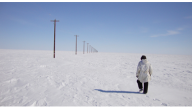
Next-Generation Ecosystem Experiments (NGEE)
Summary
Research sponsored by the Office of Biological and Environmental Research within the U.S. Department of Energy’s Office of Science. The NGEE project is a collaboration among scientists and engineers at Oak Ridge National Laboratory, Los Alamos National Laboratory, Brookhaven National Laboratory and our partners at leading universities and other state and federal agencies. ORNL is managed by UT-Battelle, LLC. In this project, we will assemble a team of scientists and engineers to design, simulate, and prototype concepts for raising air and soil temperatures in large plots and to do so in a manner that can be incorporated into multi-factor climate change experiments in the arctic tundra. An initial priority will be placed on warming soil using a concept recently developed at Oak Ridge National Laboratory. We will extend the evaluation of this technology to larger plots suitable for warming permafrost in the arctic tundra. NGEE involves expertise in modeling heat transfer using computational fluid dynamics models, systems engineering, and global change biology. Engineering plans and field testing of one or more prototypes will provide the advanced technology needed as the scientific community plans for next-generation climate change experiments in the arctic tundra.
Relevance
NGEE-Arctic is the extension of ecosystem warming experiments to the Arctic tundra. NGEE will employ the same soil warming concept developed at Oak Ridge National Laboratory.
-
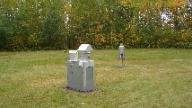
National Atmospheric Deposition Program (NADP) Monitors Precipitation Chemistry.
Summary
The National Atmospheric Deposition Program (NADP) monitors precipitation chemistry. Station Marcell Experimental Forest (MN16) Location Itasca County, Minnesota Dates of Operation 7/6/1978 - Present Latitude 47.5311 Longitude -93.4686 Elevation 431 meters USGS 1:24000 Map Name Balsam Lake Operating Agency North Central Research Station Sponsoring Agency U.S. Forest Service
Relevance
The National Atmospheric Deposition Program (NADP) monitors precipitation chemistry.
-
Throughfall Displacement Experiment
Summary
Models of global climate change predict that increasing levels of greenhouse gases in the atmosphere will (1) cause an increase in average global temperatures and (2) alter regional levels of precipitation. It is also predicted that the incidence of drought will increase with a warming global climate. Forests throughout the southeastern United States, where evapotranspiration demand is high and is predicted to increase as temperatures rise, would be particularly vulnerable to declines in annual precipitation. Experimental manipulation of hydrologic inputs at the TDE is accomplished by intercepting throughfall in approximately 2000 subcanopy troughs (0.3 x 5 m) suspended above the forest floor on a "dry" treatment plot and transferring the throughfall across a control plot for distribution onto a "wet" treatment plot. Each plot is 80 x 80 m in size. The treatments result in a 33% decrease in precipitation reaching the forest floor on the dry plot and a corresponding increase in precipitation on the wet plot. Reductions in soil moisture on the dry plot are expected to be equivalent to the driest growing seasons of the 1980's drought which resulted in reduced tree growth of some species. The site was chosen because of its uniform slope, consistent soils, and a reasonably uniform distribution of vegetation. The forest community is dominated by white oak, chestnut oak and red maple, but it contains just under 20 tree species. The past 25 years of research on the Walker Branch Watershed provide an important reference data base against which to judge the outcomes of this large-scale field experiment.
Relevance
Environmental and biological data for an upland oak forest in eastern Tennessee.
-
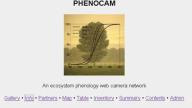
PhenoCam Network
Summary
We initiated the PhenoCam network in order to provide automated, near-surface remote sensing of canopy phenology across the Northern Forest region of New England, upstate New York, and adjacent Canada. We began by installing high-resolution digital cameras ("webcams") at more than a dozen established research sites distributed throughout this region. Images from these cameras are uploaded to the PhenoCam web page every half hour. In a recent publication (Richardson et al. 2007), we demonstrated how image analysis of archived webcam images could provides an objective means by which canopy phenology can be monitored and quantified, at relatively low cost and with minimal personnel expenses, without the need for a human observer. With the collaboration of researchers and land managers from an array of research institutions and federal agencies, this project has been expanded to a continent-wide monitoring effort.
Relevance
Three camera sites in MN.
-
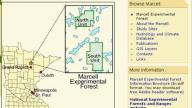
Marcell Experimental Forest Data
Summary
The MEF contains six experimental watersheds, each consisting of an upland portion and a peatland that is the source of a stream leaving the watershed. These unique features provide a wide range of hydrological environments to study. The Marcell Experimental Forest has a large historical database concerning soils, hydrology, and chemical cycling and transport. Climatic and hydrologic data have been collected continuously at monitoring stations since 1960. Six peatland / upland forest watersheds have been instrumented, and have been studied in detail, including hydrology, nutrient and mercury cycling and behavior, and release of organic carbon and acidity. Hydrologic monitoring and other related research continues at the MEF.
Relevance
Link to access MEF hydrology, climate, and GIS data.



